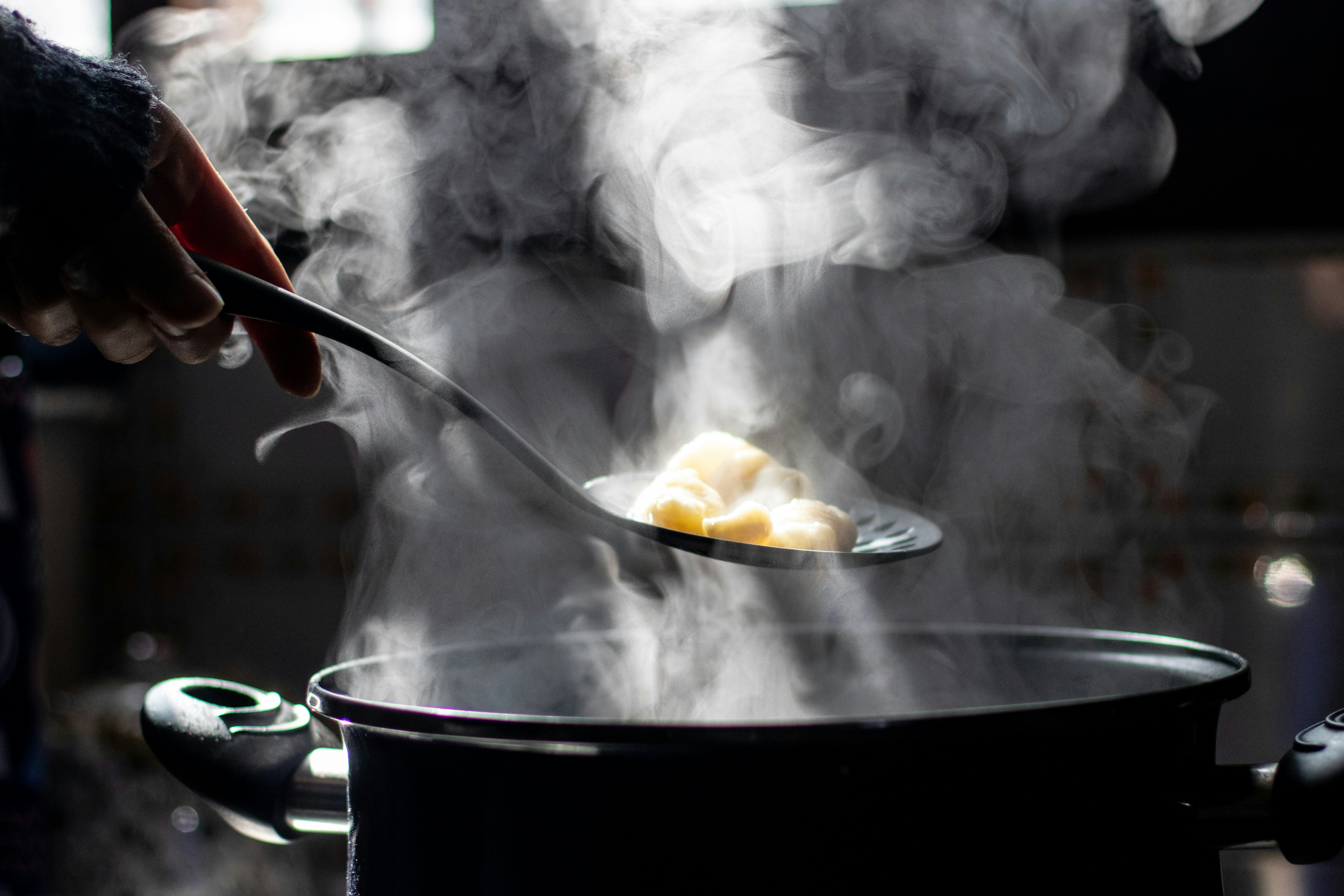Seasonal Cooking by Color: Create Vibrant Plates Year-Round
Eating should be a feast for the eyes and the body, especially with so many stunning colors in produce available throughout the year. Have you ever thought about how much your meals reflect the colors of the season? Seasonal cooking doesn't just tickle your taste buds; it can also nourish your body with a variety of nutrients. By incorporating seasonal fruits and vegetables based on their color, you can create nutrient-packed plates that not only look amazing but also deliver significant health benefits. Join me as we explore the rich junction of color, seasonality, and nutrition, offering unique recipes and essential cooking tips that empower your kitchen adventures.
The Benefits of Eating Seasonally

When we eat seasonally, we essentially follow nature’s rhythm. Every season produces a unique array of fruits and vegetables, each with their own nutritional profile. Eating a variety of colors has been linked to a multitude of health benefits due to the diverse phytonutrients found in fruits and vegetables. For example, orange and yellow foods like carrots or peppers are high in beta-carotene, while leafy greens pack a punch of vitamins K and C.
Research constantly supports the idea that not only does eating with the seasons benefit our health; it also benefits local economies and helps reduce the environmental impact associated with long-distance food transport. Moreover, seasonal produce tends to be fresher and more flavorful compared to off-season imports. Consider reading up on the benefits of local and seasonal eating on insightful platforms like Harvard Health for valuable insights.
With that in mind, let's explore how to harness the vibrant colors of each season into your cooking.
Spring: Pastel Palette of Refreshing Greens

As winter melts away, it’s time to welcome the crisp freshness of spring. Think light and bright dishes filled with vibrant greens like asparagus, peas, and leafy greens. Sanity tip: spring is not just about greens. Also, keep an eye out for the first strawberries; they bring a sweet pop of red to your plate.
Recipe: Spring Green Buddha Bowl

Ingredients: - 1 cup cooked quinoa - 1 cup lightly steamed asparagus - 1 cup shelled peas - 2 cups mixed salad greens - A handful of strawberries, sliced - 1 avocado, diced - Olive oil, lemon juice, salt, and pepper to taste
Instructions: 1. Start with a base of quinoa at the bottom of a bowl. 2. Layer the asparagus, peas, and mixed greens on top. 3. Add strawberries and avocado. 4. Drizzle with olive oil and a squeeze of lemon juice. Season with salt and pepper to taste.
The combination of flavors and textures in this vibrant bowl is a feast for both your eyes and your palate!
Summer: A Rainbow of Fruits and Veggies
One of the joys of summer is the rich variety of colorful produce available. Think juicy red tomatoes, golden corn, deep green zucchinis, and sweet purple eggplants. This rainbow of colors not only kicks up the visual appeal of your meals but also taps into a treasure trove of nutrients.
Recipe: Summer Vegetable Ratatouille
Ingredients: - 1 eggplant, diced - 1 zucchini, sliced - 1 bell pepper (red, yellow, or orange), diced - 1 cup cherry tomatoes, halved - 1 onion, chopped - 2 cloves garlic, minced - Olive oil, thyme, salt, and pepper to taste
Instructions: 1. Heat olive oil in a skillet and sauté onion and garlic until soft. 2. Add eggplant and bell pepper, cooking until slightly tender. 3. Stir in zucchini and tomatoes, seasoning with thyme, salt, and pepper. 4. Let simmer on low heat until all vegetables are tender.
Serve this colorful dish over your choice of ancient grains like farro or barley, which you can explore more in our embrace ancient grains for healthier cooking article.
Autumn: Rich Earthy Tones
As we transition into autumn, the produce palette shifts to deeper, earthier hues—think rich oranges, reds, and browns. Pumpkins, sweet potatoes, and a range of apples dominate this season, offering not just comfort but a generous supply of vitamins and fiber.
Recipe: Roasted Root Vegetable Medley
Ingredients: - 2 sweet potatoes, cubed - 3 carrots, chopped - 1 beet, peeled and diced - 1 onion, quartered - Olive oil, rosemary, salt, and pepper
Instructions: 1. Preheat the oven to 400°F (200°C). 2. Toss all ingredients in olive oil, rosemary, salt, and pepper. 3. Spread on a baking sheet and roast for 30-40 minutes until tender and caramelized.
This dish is not only visually appealing with its array of colors but is also packed full of nutrients. Drizzle with balsamic reduction for extra flavor!
Winter: Deep, Rich Colors
Winter may seem limiting in terms of fresh produce, but it’s actually a time to embrace the deep, comforting colors of root vegetables and citrus. Think stunning shades of purples, oranges, and greens to warm you up from the inside out.
Recipe: Citrus and Beet Salad
Ingredients: - 2 pre-cooked beets, sliced - 1 orange, segmented - 1 cup arugula or spinach - 1 tablespoon feta cheese - Olive oil and balsamic vinegar
Instructions: 1. On a plate, arrange beets and orange segments over a bed of greens. 2. Sprinkle feta cheese on top. 3. Drizzle with olive oil and balsamic vinegar just before serving to keep the greens fresh.
This salad not only provides a burst of color but also layers of flavor, making it the perfect winter dish to keep your immune system thriving.
Tips for Shopping Seasonal Produce
To maximize the nutritional benefits of your seasonal cooking, here are some smart shopping tips: - Visit Local Farmers' Markets: Nothing gets you fresher produce than buying directly from farmers. Plus, you can ask about the fruits and vegetables and perhaps get cooking tips directly from the growers! - Plan Your Meals: Look at seasonal produce lists online to plan meals ahead of time. The USDA provides seasonal charts that vary by region. - Buy in Bulk: If you find particularly appealing seasonal fruits or veggies, buy in bulk. You can store them for later, either frozen or canned, to capture their peak freshness.
Storing Colorful Produce
Proper storage ensures that your colorful fruits and veggies last longer. Here are some tips: - Keep your fridge organized: Store your vegetables in the crisper drawer and ensure the humidity levels are suitable for the produce type. - Utilize Mason jars for herbs: Fresh herbs can wilt quickly, but storing them in jars with a bit of water at the bottom can keep them fresh longer. - Learn about freezing: Many fruits and veggies freeze well; flash-freezing can help maintain their color and nutritional value.
Yes, cooking seasonally by color can inject some creativity into your culinary repertoire. Not only will your meals be nutritious, but they’ll become a beautiful canvas of nature’s palette.
Next Steps: Embark on Your Colorful Culinary Journey
With the changing seasons comes a delightful opportunity to reflect on your dining experience. Embracing seasonal cooking by color isn’t just a method—it's an invitation to develop a deeper relationship with your food. Let the colors of the seasons inspire you to explore new flavors, connect with local harvesters, and reach new heights in your cooking endeavors.
And when you feel overwhelmed in the kitchen, remember that hustle doesn’t have to take over your cooking. Check out our guide on 10 time-saving cooking hacks for busy weeknights to streamline your time and still keep your meals colorful and seasonal.
By following these tips and recipes, you’ll not only celebrate seasonal produce, but you’ll also foster healthier eating habits that nourish your body and enliven your table. So gather your colorful produce, unleash your creativity, and start cooking meals that are as lively as the seasons themselves!


